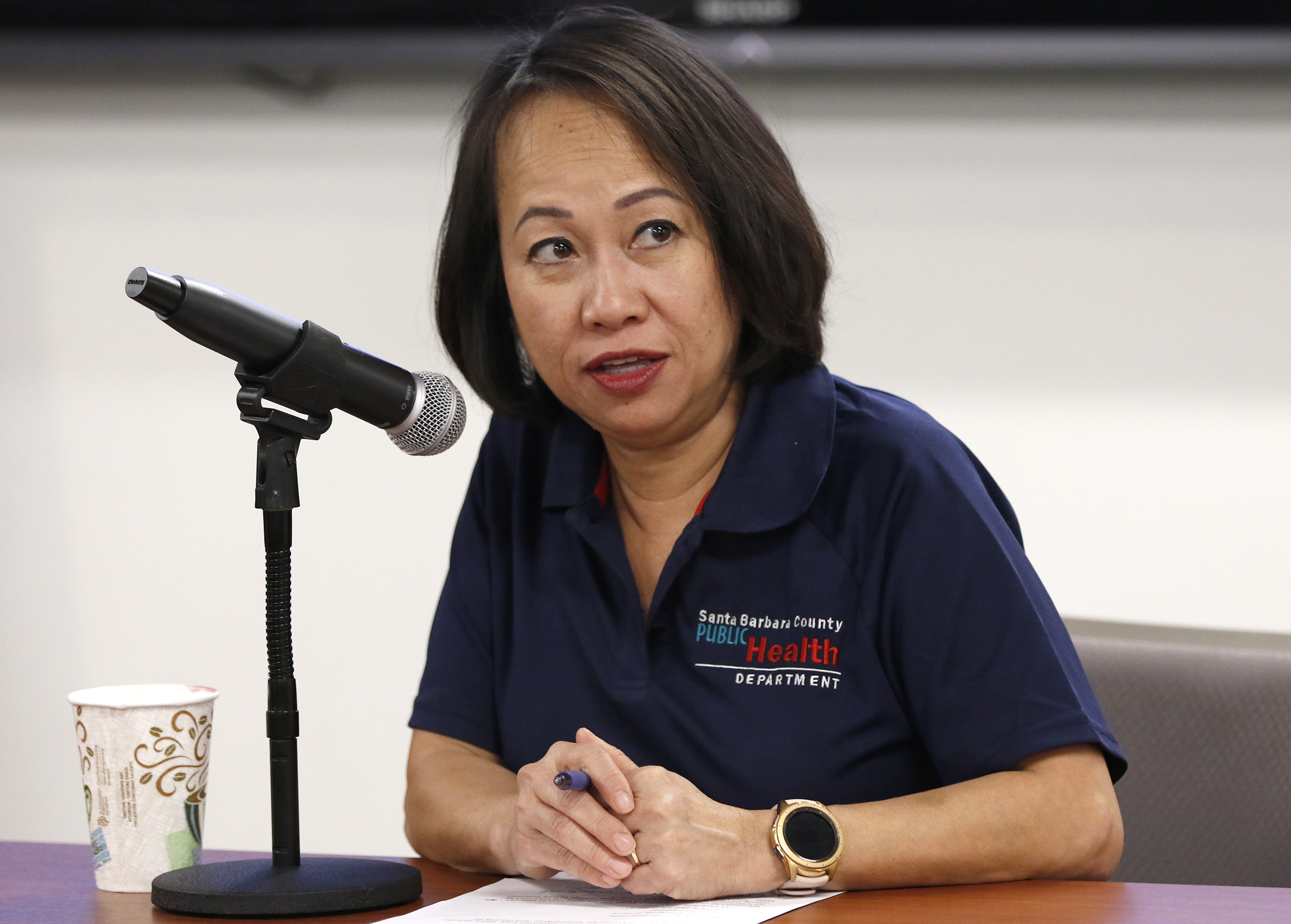Santa Barbara Steels Itself for COVID-19 Surge
Public Health Officials Plan for County Cases to Spike Between April 26 and July 28

Santa Barbarans are relentlessly asking, when will life go back to normal? While normalcy may not be attainable, the county’s public health department has answered the next best question: When will the local number of COVID-19 cases reach a peak?
Between April 26 and July 28, according to the Director of Public Health Dr. Van Do-Reynoso at the County Board of Supervisors meeting Tuesday. The date range is based on a surge planning model, she explained. If the model is accurate enough, Santa Barbara will be on the other side of “the curve” once case counts hit a peak in that date range.
“We are looking at three different models right now,” Do-Reynoso said. “From Penn Medicine, Meher Lab, and University of Washington. The model is limited by the small size of our county and our limited data, but we’re running the models and choosing what really reflects local needs.”
The report to the supervisors was the most comprehensive one given at any meeting since the virus outbreak took root in Santa Barbara. The number of ventilators county-wide, for example, has proved to be an elusive figure to obtain in recent weeks. The public health director at this report was able to confirm the county has 85 ventilators and is looking for more.
“Hospitals have put them on order lists, and we submitted a request for 100 more, but how many we get is anyone’s guess,” Do-Reynoso said. “We have also ordered 500 disposable ventilators in hopes that between the two orders, our community will get some. There is a fairly rigorous algorithm for dispersing scarce medical supplies, so we will see.”
In terms of other scarce medical supplies, the county yesterday received one million N95 masks for health-care workers.
She delved more into the surge model and how it is being used to predict and plan the county’s needs. She said the county is planning for the best-case scenario and the worst-case scenario. The county is actively pursuing 500-1,000 more alternative-care beds, with 500 confirmed to be ready as early as in the next two weeks.
“Another really interesting thing, as you play with percentages of social distancing in the model — that has the largest effect on the number of local cases and hospitalization rates,” Do-Reynoso said.
The supervisors were concerned with how well the health department was getting messages out to the Spanish-speaking community. Supervisor Joan Hartmann pressed Do-Reynoso more about the department’s immigrant outreach.
“We are taking material that is already published either on our website or via CDC and making sure that they are bicultural and bilingual,” Do-Reynoso said. “The big need that we are acknowledging is that within our immigrant community, there are community members without the written language, the indigenous population. So we are partnering with community interpreters to do that.”
For Supervisor Steve Lavagnino, that wasn’t enough.
“In speaking with the hospital, it didn’t seem like it was the Oaxacan community or the farmworker community right now that’s hospitalized. It’s a high rate of Hispanics and a middle class that’s been affected immediately. For some reason, the message isn’t getting to the locals in Santa Maria.” Do-Reynoso committed to ramping up efforts.
Sheriff Bill Brown and County Fire Chief Mark Hartwig reported to the board how their departments are preparing for the surge — the County Jail being the most remarkable, with a 50-year record low of only 685 inmates to facilitate social distancing.
Aside from releasing low-level inmates, Brown said that new inmates spend 14 days in isolation from the general population, the most at-risk inmates are consolidated into one wing, and Wellpath, the jail’s contracted health services provider, developed a “state-of-the-art” response plan that involves taking the temperature of anyone doing business at the jail and more.
When it comes to frontline duty, not much has changed on the law enforcement side except that officers and firefighters wear protective gear like masks when responding to potential COVID-19 calls. For most small crimes, officers are exercising discretion and issuing citations instead of arrests. He said that so far, no arrests have been made against those not complying with the state and county mandate.
He also said the office is preparing for a more jarring scenario.
“While we are hopeful that our efforts throughout the county will result in a decreased amount of deaths associated with the virus, we are planning for a surge in the number of coroner’s investigations and the overall impact on the coroner’s system…. We’ve expanded our local surge capacity in the event of a rise in mortality rates in the county.”
The Sheriff’s Office has so far had five of its employees and one contract worker test positive for COVID-19, and the County Fire Department had a close brush when an engine company of firefighters were put into quarantine after coming into close contact with a woman exhibiting COVID-19 symptoms. The woman later tested negative for the virus and the firefighters are out of quarantine, according to public information officer Captain Daniel Bertucelli.
At the Santa Barbara Independent, our staff continues to cover every aspect of the COVID-19 pandemic. Support the important work we do by making a


